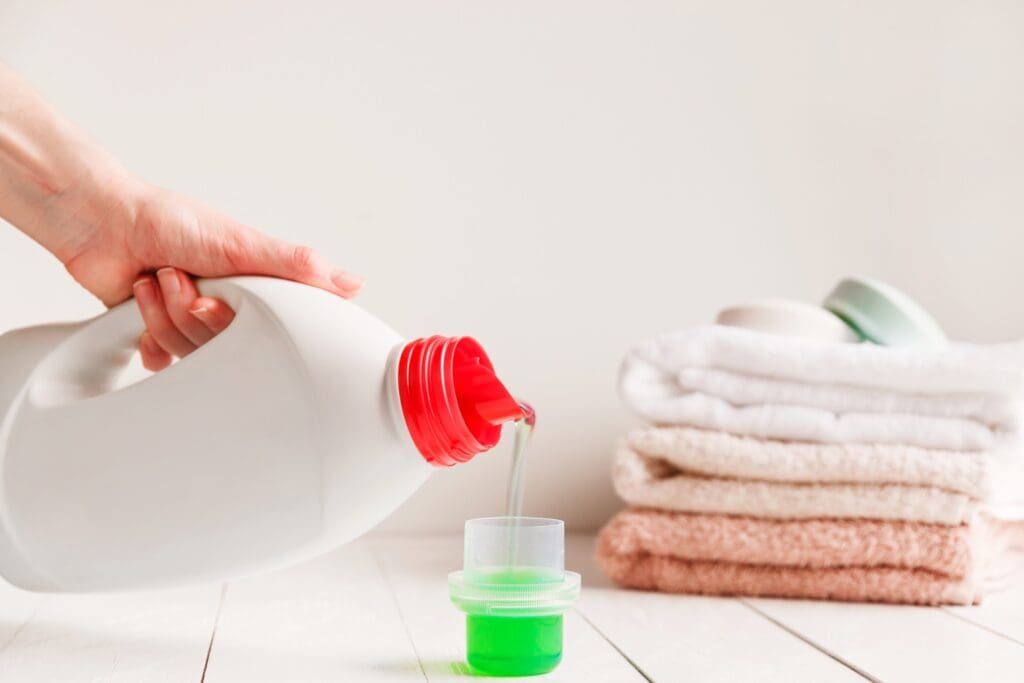It’s a common assumption that if we want to get rid of stiffness, smells, or stains in our clothes, we should use a generous amount of detergent and fabric conditioner. In our minds, if a little detergent gets things clean, then a lot must be even better – or so we think. In the same way that too much of anything isn’t good, too much laundry detergent isn’t good either.
So, what’s the right balance then? How much detergent do you really need to get your laundry sparkling clean without going overboard? Let’s all find out in this article!
Factors Influencing the Amount of Laundry Detergent Needed
Let’s look into the key factors that impact your detergent needs. By understanding these influences, you can finetune your laundry routine so your clothes come out fresh, clean, and just the right amount of soft.
1) Load Size (Small vs. Large Loads)
The size of your laundry load is one of the most obvious factors. For smaller loads, less detergent is needed compared to larger loads. Overloading the washer with detergent in a small load can lead to excess suds and residue buildup, while underdosing for a large load can leave clothes dirty.
2) Fabric Type (Delicates vs. Heavy Fabrics)
Different fabrics absorb and retain detergent differently. Heavier materials such as towels and jeans tend to need more detergent to fully clean them, whereas lighter fabrics such as shirts, fine linens, or silk dresses often need less. Thus, matching the detergent quantity to the fabric type helps ensure effective cleaning without overuse.
3) Soil Level (Light vs. Heavy Soil)
The extent of stains on your clothes also affects detergent needs. If your laundry is heavily soiled or stained, you might need to use a bit more detergent to effectively break down the grime. Pretreating stains can help, so you don’t have to rely solely on detergent for tough stains.
4) Water Hardness (Soft vs. Hard Water)
Water hardness refers to the amount of calcium and magnesium in your water supply. Hard water requires more detergent to achieve the same cleaning results as soft water. If you live in an area with hard water, consider using a detergent formulated for hard water or adding a fabric softener to your laundry routine. Conversely, soft water needs less detergent because it lathers more easily.
5) Washing Machine Type (Traditional vs. High-efficiency Machines)
High-efficiency (HE) washers use less water and require specially formulated low-sudsing detergents. Using too much detergent in an HE washer leads to excessive suds and poor rinsing, while traditional machines need more detergent for full effectiveness.
6) Detergent Concentration (Liquid vs. Powder Detergents)
Detergents come in various concentrations, from standard to ultra-concentrated formulas. Higher concentration detergents are more potent and require less per load. Always follow the manufacturer’s recommendations for the type of detergent you use to avoid overuse or underuse.
How to Measure the Proper Amount of Detergent: A Quick Guide
Liquid vs. Powder Detergent
Different types of detergent require different measuring techniques. Liquid detergents usually come with a cap that has lines indicating the correct dosage for various load sizes, while powder detergents often include a scoop. Here’s a simple table to help guide you:
| Load Size | Liquid Detergent | Powder Detergent |
|---|---|---|
| Small Load | 1/3 cap (about 1-2 tablespoons) | 1/3 scoop (about 1-2 tablespoons) |
| Medium Load | 2/3 cap (about 3-4 tablespoons) | 2/3 scoop (about 3-4 tablespoons) |
| Large Load | Full cap (about 5-6 tablespoons) | Full scoop (about 5-6 tablespoons) |
High-efficiency Washers
If you have a high-efficiency (HE) washing machine, the measurements are even more critical because these machines use less water. Always use HE specific detergent, which is formulated to produce fewer suds. Here’s how to adjust your measurements:
| Load Size | HE Liquid Detergent | HE Powder Detergent |
|---|---|---|
| Small Load | 1/4 cap (about 1 tablespoon) | 1/4 scoop (about 1 tablespoon) |
| Medium Load | 1/2 cap (about 2 tablespoons) | 1/2 scoop (about 2 tablespoons) |
| Large Load | 1/2 cap (about 3 tablespoons) | 1/2 scoop (about 3 tablespoons) |
Concentrated Detergents
Concentrated detergents are designed to be used in smaller amounts. It’s important not to confuse them with regular detergents, as using the same quantity can lead to over-sudsing and residue.
| Load Size | Concentrated Liquid Detergent | Concentrated Powder Detergent |
|---|---|---|
| Small Load | 1/4 cap (about 1 tablespoon) | 1/4 scoop (about 1 tablespoon) |
| Medium Load | 1/3 cap (about 2 tablespoons) | 1/3 scoop (about 2 tablespoons) |
| Large Load | 1/2 cap (about 3 tablespoons) | 1/2 scoop (about 3 tablespoons) |
Tips for Accurate Measurement
- Check the Cap/Scoop: Many people overlook the lines or markings on detergent caps and scoops. These lines are there to help you measure the exact amount of detergent needed for different load sizes.
- Use a Measuring Spoon: If you want to be extra precise, consider using a measuring spoon, especially if you use concentrated detergent. This helps ensure you don’t accidentally use too much or too little.
- Adjust Based on Load Soil Level: For heavily soiled clothes, you might need to add a little more detergent, but it’s always better to pretreat stains rather than just add more detergent to the whole load.
How to Adjust Detergent Use When Hand Washing
When hand washing, the amount of water you use is much less than in a washing machine, which means you also need to reduce the amount of detergent. Here’s a simple guideline:
- Small Basin (1-2 gallons of water): Use about 1 teaspoon of detergent.
- Medium Basin (3-4 gallons of water): Use about 2 teaspoons of detergent.
- Large Basin (5+ gallons of water): Use about 1 tablespoon of detergent.
It’s important to dissolve the detergent fully in the water before adding your clothes. This ensures the detergent is evenly distributed and doesn’t leave any residue on your garments.
Adjusting for Fabric Type and Soil Level
Different fabrics and soil levels also influence how much detergent you should use. Delicate fabrics such as silk or wool require less detergent, while cotton or synthetic blends might need a bit more, especially if they’re heavily soiled.
- Delicate Fabrics (Silk, Wool): Stick to the lower end of the detergent range – about 1/2 to 1 teaspoon per small basin.
- Regular Fabrics (Cotton, Blends): Use the standard 1 teaspoon per small basin, adjusting slightly based on the level of soil.
- Heavily Soiled Items: Consider pretreating stains before washing and then use up to 1.5 teaspoons per small basin.
Tips for Hand Washing Success
- Pretreat Stains: For stubborn stains, apply a small amount of detergent directly to the stain and gently rub it in before adding the garment to the water. This helps break down the stain without requiring extra detergent in the basin.
- Rinse Thoroughly: One of the most important steps in hand washing is rinsing. Make sure to rinse the clothes in clean water until all the detergent is washed out, as any leftover detergent causes stiffness or irritation when worn.
- Avoid Overloading the Basin: Washing too many clothes at once leads to inadequate cleaning and rinsing. Stick to a few items per wash to ensure each piece gets properly cleaned and rinsed.
For Flawless Laundry Results, Trust All Seasons Garment Care & Tailoring – Schedule Your FREE Pick-up Today!
Doing the laundry is a little more sophisticated than eyeballing how much detergent you need and turning on the machine. To get truly flawless results, it takes precision, the right products, and proven expertise – exactly what we offer at All Seasons Garment Care & Tailoring! Whether you prefer hypoallergenic detergent or just want your clothes to be well cared for, you can rely on us, always!
We have retail stores in North Loop and Crystal in Minneapolis, as well as in Deep Haven, Mound, and Waconia, among others. You can request dry cleaning, alterations, and wedding gown cleaning and preservation from us because we also specialize in these services.
If you can’t make it to our store, try our Free Pick-up and Delivery Service instead. We’ll visit your home as often as twice a week to pick up your laundry bags and return your items cleaned and neatly folded. Call our customer support team today at 952-395-8778 to schedule a pick-up!
Frequently Asked Questions
Excess detergent creates too many suds, which trap dirt and grime in the fabric instead of washing them away. These extra suds also leave a residue on your clothes, making them feel stiff or sticky and causing colors to fade over time.
It’s possible, and using too little detergent can be a problem. If you don’t use enough detergent, your clothes may not get fully clean, leaving behind dirt, oil, and sweat. This can result in dull, dingy clothing and an unpleasant odor, especially if you’re washing heavily soiled items. However, it’s easier to correct using too little detergent than too much.
Absolutely, the type of detergent you use can significantly impact how much you need and how well your clothes are cleaned. For instance, liquid detergents are great for pretreating stains and dissolving in cold water, while powder detergents often work best in warm water and can be more economical.





